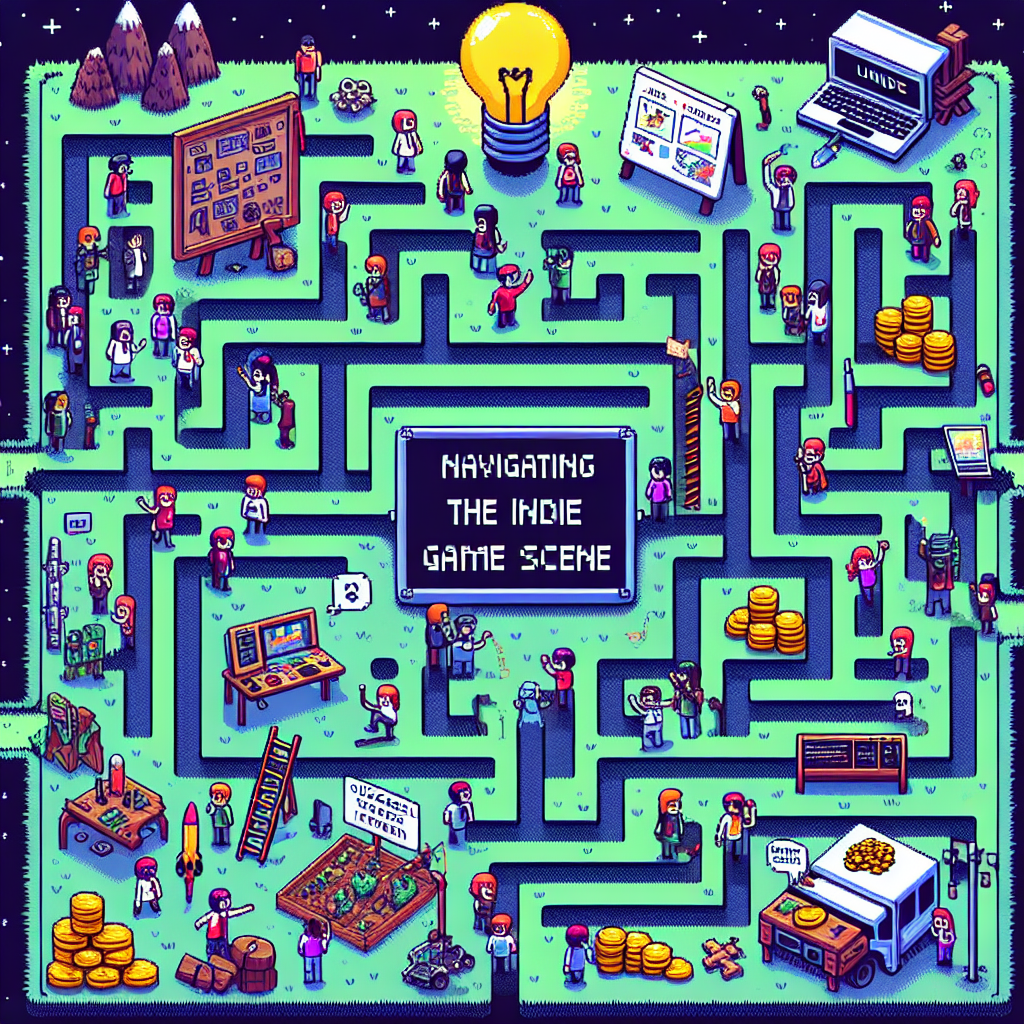Navigating the Indie Game Scene: Key Strategies for Developers
The indie game scene has flourished in recent years, showcasing a diverse array of creative and innovative projects that often rival major studio releases. If you’re an aspiring developer or an indie studio looking to carve a niche in this dynamic market, having a well-thought-out strategy is crucial for success. In this article, we’ll explore essential strategies to navigate the indie game landscape effectively.
1. Start with a Solid Concept and Prototype
Define Your Vision: Every successful game begins with a strong concept. Spend time brainstorming and refining your ideas. Consider your passions, skills, and what makes your project unique. What story do you want to tell? What experiences do you want to create for your players?
Develop a Prototype: Instead of diving straight into full development, create a prototype. This should be a basic version of your game that showcases its core mechanics. Prototyping allows you to gather feedback early on and make essential adjustments without investing extensive resources.
2. Build a Community
Engage Early and Often: As an indie developer, your community can be your biggest asset. Start building an audience as soon as possible. Use social media platforms, forums, and game development networks to share your progress, gather feedback, and create excitement around your project.
Leverage Crowdfunding: Platforms like Kickstarter and Indiegogo not only provide funding opportunities but also enable you to test the waters and gauge interest in your game concept. A well-prepared crowdfunding campaign can greatly enhance your visibility and community engagement.
3. Focus on Marketing and Branding
Establish Your Brand: Developing a strong visual and narrative identity for your game helps it stand out in a crowded market. Create engaging artwork, a memorable logo, and a compelling tagline. Your branding should reflect the essence of your game and resonate with your target audience.
Utilize Multiple Marketing Channels: Don’t rely on a single platform for marketing; consider using websites, blogs, social media, trailers, and influencers to reach potential players. Tailor your messaging for each channel and track your results to optimize your approach.
Create a Press Kit: A professional press kit provides journalists and influencers with crucial information about your game, including high-quality screenshots, trailers, gameplay details, and your development story. This resource can boost your chances of getting coverage and reviews.
4. Attend Industry Events
Network with Peers and Industry Leaders: Events like PAX, IndieCade, and GDC provide fantastic opportunities to meet other developers, publishers, and potential collaborators. Networking can lead to invaluable insights, partnerships, and opportunities to showcase your game to a broader audience.
Participate in Game Jams: Game jams are excellent venues for testing your creative limits and collaborating with other developers in a condensed timeframe. They can ignite new ideas and provide experience in meeting deadlines while fostering a sense of community.
5. Iterate Based on Feedback
Embrace Constructive Criticism: The ability to learn from player feedback is one of the keys to successful game development. Share your prototype with players and be open to their suggestions and critiques. Iteration based on real user experiences can dramatically improve your game before its official launch.
Continuous Playtesting: Conduct regular playtesting sessions throughout the development process. This not only helps refine gameplay mechanics but also brings fresh perspectives to your project. Consider using user testing tools, beta testing, or early access programs to continually gather feedback.
6. Know Your Distribution Options
Explore Multiple Platforms: Determine the best distribution channels for your game, such as Steam, itch.io, Epic Games Store, or even mobile platforms like the Apple App Store and Google Play. Each platform has its own audience and marketing opportunities.
Consider Self-Publishing vs. Seeking Publishers: Evaluate the pros and cons of self-publishing your game versus seeking a publisher. While self-publishing offers full control over your project, partnering with a publisher can provide funding, marketing support, and access to a wider player base.
7. Stay Agile and Adaptable
Be Prepared to Pivot: The indie game landscape is continually evolving, with emerging trends and player preferences. Stay informed about industry developments and be willing to adapt your game’s direction based on market trends and audience feedback.
Learn and Build Skills Continuously: The journey of game development is filled with challenges. Invest time in learning new tools, technologies, and trends in the gaming industry. Online courses, tutorials, and community forums can accelerate your growth and enhance your skillset.
Conclusion
Navigating the indie game scene is no small feat, but with the right strategies, developers can carve out a successful path. By focusing on community building, innovative marketing, iterative development, and leveraging industry connections, indie developers can create impactful games that resonate with players. The key is to remain passionate, adaptable, and committed to your vision while engaging with the vibrant indie gaming community that continues to inspire and innovate.




